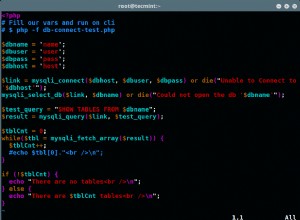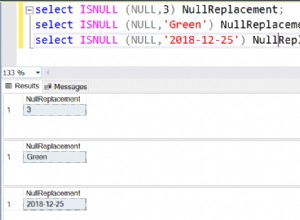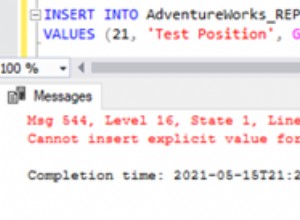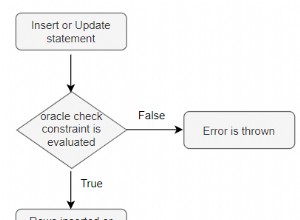Voici un script de travail qui utilise INFORMATION_SCHEMA.COLUMNS pour trouver tous les *varchar(max) colonnes et les convertit en varchar(255) :
declare @schema nvarchar(255)
declare @table nvarchar(255)
declare @col nvarchar(255)
declare @dtype nvarchar(255)
declare @sql nvarchar(max)
declare maxcols cursor for
select
c.TABLE_SCHEMA,
c.TABLE_NAME,
c.COLUMN_NAME,
c.DATA_TYPE
from
INFORMATION_SCHEMA.COLUMNS c
inner join INFORMATION_SCHEMA.TABLES t on
c.TABLE_CATALOG = t.TABLE_CATALOG
and c.TABLE_SCHEMA = t.TABLE_SCHEMA
and c.TABLE_NAME = t.TABLE_NAME
and t.TABLE_TYPE = 'BASE TABLE'
where
c.DATA_TYPE like '%varchar'
and c.CHARACTER_MAXIMUM_LENGTH = -1
open maxcols
fetch next from maxcols into @schema, @table, @col, @dtype
while @@FETCH_STATUS = 0
begin
set @sql = 'alter table [' + @schema + '].[' + @table +
'] alter column [' + @col + '] ' + @dtype + '(255)'
exec sp_executesql @sql
fetch next from maxcols into @schema, @table, @col, @dtype
end
close maxcols
deallocate maxcols
C'est à peu près la seule utilisation de curseurs que j'ai jamais tolérée, mais c'est une bonne utilisation. Essentiellement, il trouve tous les *varchar(max) , construit le alter instruction, puis l'exécute en utilisant sp_executesql .
Amusez-vous !




